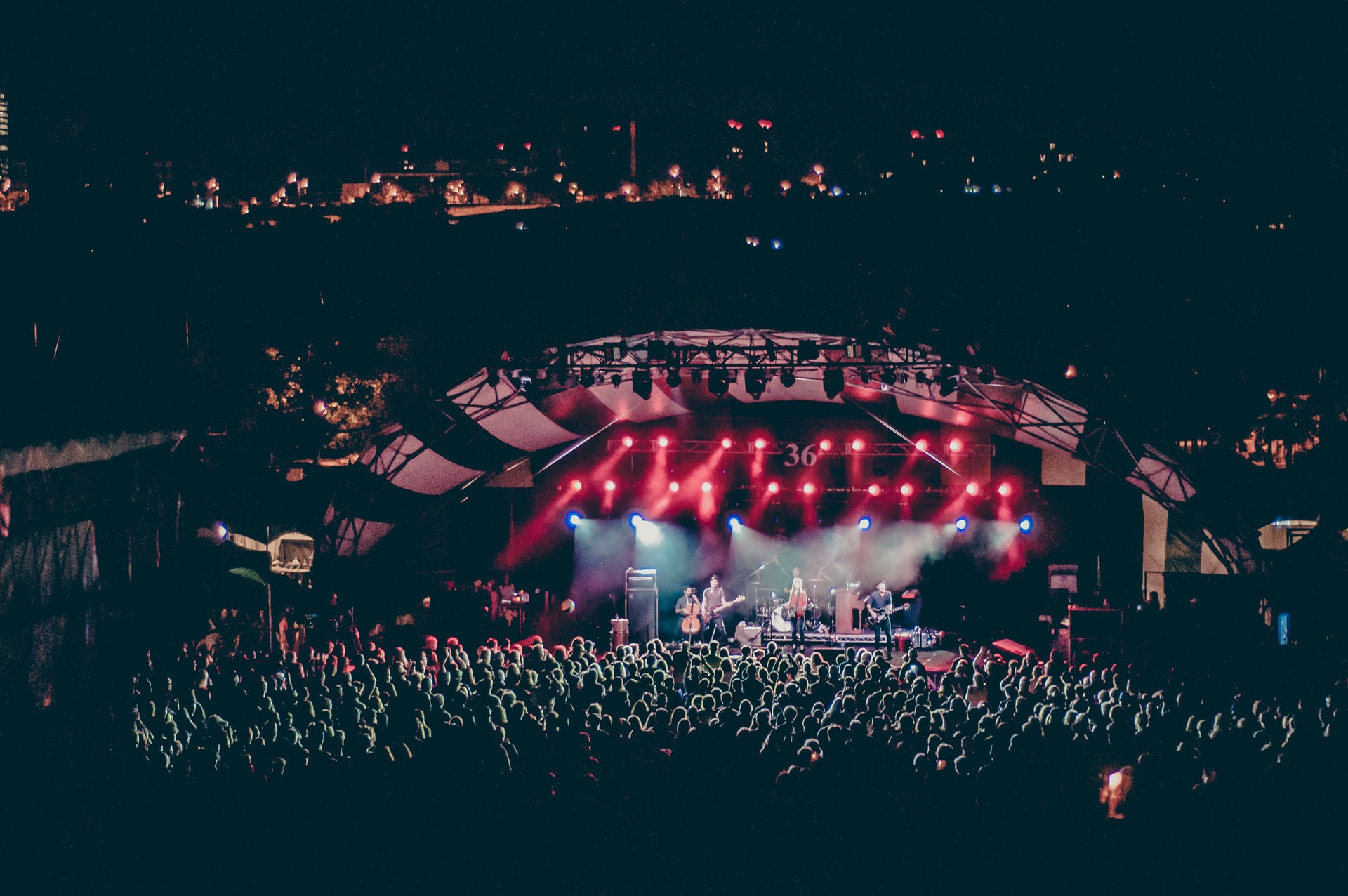Whether you’re arranging a small meeting or a large conference, event planning is a huge undertaking! Every event, regardless of how small or complicated, involves meticulous planning and organizing. There are a number of components you should start thinking about early on to make the process as stress-free as possible, from establishing an exact budget to publicizing your event.
While no two events are alike, and each has its own set of goals, budget, and target audience, there are a few steps you can take to jump-start the planning process, stay on track, and maximize the success of your event.
1. Define your objectives and aims.
You should spend time determining the objective and rationale for preparing this event before diving directly into the logistics, such as the venue or speakers. You should respond to the following question:
What is the event’s ultimate goal?
This is the reason you decided to organize an event company Manchester in the first place. Are you attempting to:
Are you looking to increase your sales? Are you willing to help with a product launch? How can you raise brand awareness? Or perhaps you have a number of objectives in mind? Determine your goals and how this event will assist you in achieving them.
What are the goals after that?
When preparing any event, you should establish a set of goals that will help you achieve your final aim. Here are a couple of examples of event goals:
- Increase registration by 10% over the previous event.
- Increase sales by 25% above the previous event
- Get 100 preorders for a new product.
During the event, increase social media mentions, followers, and reposts.
You can construct a preliminary scope of the event once you have your goals and objectives in place. Your scope should include crucial elements and indicate how you plan to achieve your objectives. Even if it isn’t set in stone, you should make a list of preliminary event specifics, such as:
Dates. Your event’s timeline, for example, in 9 months.
Attendees. Is this going to be a 100-person, 1,000-person, or 10,000-person event? You should start thinking about scale. Are your guests traveling from all over the country, or is this a local gathering? You’ll also want to consider the demographics of your guests as you plan.
Location. Is your event going to be held in your hometown? Or will it be held at a certain location? Begin compiling a list of locations and venues that are suitable for your event.
This is the type of occasion. Are you trying to spread the word about a new product? A one-day event featuring a keynote speaker may be appropriate. Bringing thousands of customers together? You might benefit from a two-day user conference. Do you want to host an internal or association meeting? A day of small sessions might work.
You can frame your event and gain leadership buy-in by defining your goals and early project scope. If your company is already on board with the event, your goals and scope will assist you in moving forward with the planning process.
 2. Create a budget for the event.
2. Create a budget for the event.
Making a budget is an important first step in event planning since it clarifies other areas of your strategy. Establishing a budget also helps to avoid unpleasant surprises (like running out of money for decor, etc.). You’ll be more successful if you plan out your full budget ahead of time, update it as variables are finalized, and stay close to the process.
Based on your overall budget and initial scope of requirements. To obtain a sense of how your money will be distributed among your demands, start mapping out your line item costs.
“Budget is broken down by marketing and advertising (43 percent), speakers and performers (32 percent), printed materials (29 percent), and venues (18 percent),” according to Eventbrite.
You’ll need to revisit the budget as your idea takes shape. Line items may certainly change; just remember to create a detailed budget that reflects any adjustments or modifications. And, because you should never go over your budget, it’s usual for planners to make adjustments to keep you on track.
3. Assemble your event planning team
Many or all of the responsibilities outlined in this section may be handled by you directly for small events. Large events, on the other hand, necessitate a well-organized team to put on the show.
If you’re starting from scratch, it’s critical to assign duties as soon as possible to establish responsibility. Everyone on the team should report to a project manager who is aware of all of the moving parts.
Putting together the ultimate event team
Only 12% of events have teams of 10 or more people, according to Eventbrite, and the most common number is 2 to 5 employees (45% of events), hence people frequently wear many hats. If you’re one of the select few with a team of five or more, here’s how roles are commonly distributed:
Manager of the project
This individual is in charge of overseeing all of the moving parts outlined below and is ultimately responsible for the event’s execution. She is in charge of the budget. Determines the course of action. Makes purchasing decisions at the highest level.
The show floor/venue
While on-site, this individual is the main point of contact for the venue, vendors, sponsors, and onsite volunteers and staff: security, photography, and food/beverage. They remember everyone’s name and are familiar with all of the outlets.
Scheduling
This individual is in charge of developing the agenda, working with speakers, and ensuring that the schedule is up to date and conveyed to the appropriate parties. Your event’s meeting coordinator is passionate about helping attendees become excellent networkers.
Design that is innovative
All visual design for printed and web materials such as schedules, collateral, registration, and signage, as well as anything needed for the mobile event app, was done by creative designers. To put it another way, they make you appear good. You might want to hire an event design firm.
Marketing and Public Relations
This individual or team makes the appropriate people aware of the event, develops offers and a timing strategy to increase registration, manages branding, communicates with registrants, coordinates social media amplification and media relations, and sends and measures follow-up materials. Oh, and they’re completely obsessed with quantifiable results.
This group ensures that attendees have everything they need to get the most out of the event, including maps, timetables, speaker information, and networking tips. They design and maintain the mobile event app.
Check-In and Registration
These individuals are in charge of registration setup, interact with a software provider, create and maintain badges, generate reports, and ensure that the registration process (both prior to and during the event) runs successfully.
Sponsorships
This team member is responsible for planning booth spaces, selling sponsorship opportunities, maintaining sponsorship relationships, and exploring community group partnerships. They have impeccable timing and excellent interpersonal abilities.
Keeping your group on track
You’re ready to build an event project plan now that you’ve put together a team. A project plan is more than just a list of tasks to be completed. It’s a complete analysis of each and every action item, including owners, dependencies, deadlines, and status. Every action item should be able to be justified by linking it to your top-level event objectives.
Tools for event planning
Project management software makes event planning and management easier. Make use of these tools to keep track of all the moving parts. A project manager can keep an accurate view of progress and timetables by using these tools to assign and monitor projects:
- Asana
- Trello
- Smartsheet
4. Decide on a location and a date.
The location and date of your event are two significant factors that will influence the rest of your project strategy. Begin your venue search as soon as feasible. Because the event market is busy, it’s critical to identify a time when a venue will be available. You’ll need to think about dates for your location based on seasonal elements like travel and prices while choosing a venue.
“Finding huge locations in January is quite difficult,” says Romy, an events industry veteran at PRIME, a full-service events agency in Vancouver. “There are a lot of sales conferences in January and February, and it happens again in September and October.” She claims that typical locations with exhibit floor space are difficult to come by at these times.
As you conduct research and speak with representatives from various venues, make sure to ask as many questions as possible to guarantee a good fit. Budget, thematic fit, location (is it central, simple to travel to? ), facilities, and on-site staff should all be considered. Is there a handy location for restrooms throughout the venue? What is the current state of firefighting and emergency response?
Tip: Once you’ve found the perfect location, don’t be afraid to haggle over the price. According to EventManager, half of event planners negotiate a discount off the listed costs, and of those that do, the most typical concessions are free WiFi, AV, or parking.
5. Create a logo for the event
Your event’s branding sets the tone for your event, from the name and topic to the website design and on-site look and feel. You want a strong personality to come to mind when they think of your event. A strong event brand also serves as a vision for your event and aids in steering it in the right direction.
When dealing with brands online, in person, or over the phone, 60 percent of millennials in the United States demand consistency. (*)
When choosing your event branding, keep in mind that it should mirror your organization’s brand while also having its own identity. Also consider how your brand will be seen both online and in person. Finally, think about how you’ll incorporate your event brand throughout the various parts of your event.
When it comes to event branding, it usually entails:
- The name of the event. The first and most important stage, the name of your event is the first thing attendees will see, so it should express your vision for the event.
- Theme. A name cannot tell the entire tale. A theme is frequently used to connect an event together.
- Colors, typography, and logo All marketing touchpoints should have the same look and feel.
- Decor on-site, email, signage, and more While not every touchpoint needs to be hyper-branded, some do. Individual pieces should work together to complement the overall story.
- You should apply these branding components across all platforms, including your event website, social media, emails, tickets and registration, and your event app, once you’ve established them.
Want more on branding? Check out our Event Branding Guide.
In this article, we’ll go over the brand elements that every event should think about, as well as how to construct them!
 6. Make a schedule.
6. Make a schedule.
Make your plans as soon as possible! Is there going to be a keynote speaker? Is there going to be an extra day or evening set out for your sponsors? Would there be a single “track” of workshops and speeches, or will guests be able to choose from a number of different programs at any given time? You can start to develop a high-level vision of your event program as you answer these basic questions.
Don’t worry: having the schedule ready before you start marketing the event isn’t necessary. After you’ve started marketing your event and registration starts to rise, you can make adjustments to the schedule. Making changes to the schedule on your website and mobile app is simple thanks to technology.
Because your guests will want to know what to expect, it’s better if you can confirm the fundamental framework as soon as feasible. In addition, the schedule is a significant selling feature for advertisers!
Other Things to Think About
- There are a variety of other program factors to consider in addition to the primary event program. If your event is a full-day or multi-day affair, you should also consider the following:
- Food and drink are two of the most important aspects of any event. Are you going to serve lunch or snacks?
- Happy hours, networking opportunities, or wellness activities are examples of ancillary events.
Will there be a celebration or party at the end of the event?
7. Make sure sponsors, exhibitors, and speakers are confirmed.
If you’re presenting a large-scale event, you’ll almost certainly want to enlist the help of others to help defray costs and exhibit a variety of industry perspectives. Speakers, sponsors, and exhibitors are all popular ways to provide value to your attendees while also helping to defray costs.
Speakers
If your event is divided into sessions, you’ll need to choose speakers for each one. There are two ways to add speakers to your system:
Submissions for sessions are now being accepted.
Hosting an open call for session submissions is a terrific approach to use your partners and customers as speakers if you have an engaged community. Individuals must typically submit a session abstract that explains the session topic and value offer in order to participate in an open call. Your team will use this to review submitted abstracts, choose speakers, and connect with individuals who were and were not chosen.
Speakers should be personally invited.
On the other hand, if you have specific people in mind, you might invite them to speak at your gathering. When contacting a potential speaker, give them a convincing overview of the event and audience, as well as your enthusiasm for their participation. Keep in mind that invited speakers frequently seek money in addition to travel and housing.
Speakers’ management
Remember to keep a line of communication open once your speakers have been identified. Make a speaker agreement that includes important details such as presentation expectations, content deadlines, on-site technology, and compensation. Make sure you’re clear about your expectations ahead of time so there aren’t any unpleasant shocks the day of the event!
Continue to communicate once the initial confirmation communication and speaker agreement has been sent. Do you want your speakers’ speeches to follow the topic of the event? As you develop materials, make sure to provide them. If you require speakers to submit their final presentations, send a reminder to make sure they do so on time.
Sponsors
After attending an event, 74% of attendees say they have a more positive perception of the company, brand, product, or service being advertised.
EMI and Mosaic
Make a list of the sponsors you’d want to have at your event. Before you contact them, do some research to see how they would benefit from being a part of your event. Do they have any mutual clients? What do you mean, complimentary services? You should also make certain that any potential sponsors will benefit your attendees. Take the time to craft customized proposals that showcase those distinct advantages, and be sure to accentuate them when reaching out.
Take the time to build sponsorship packages before reaching out to potential sponsors. Your packages should include a range of prices and benefits. Don’t be afraid to get creative and offer unusual sponsorships in addition to regular sponsor packages, such as:
- A lounge that has been sponsored
- A internet hotspot as well as a phone charging station are available.
- Sponsorship of the Event App
- Sponsorship of a wellness activity, for example.
- Consider what activities and tools your participants are looking for and how you can provide value to the event.
Exhibitors
Exhibitor packages are another popular strategy to attract sponsors. As a result, you’ll usually designate space at your event to your exhibitors. Each exhibitor sponsorship deal includes a set amount of space for your exhibitors to utilize, brand, and interact with your attendees.
Tip: If you’re working with exhibitors, be sure to encourage attendees to interact with them. To encourage people to roam around and engage, schedule dedicated exhibitor time slots.
8. Identify and choose your technological tools
For both event organizers and attendees, technology is improving the event space. You’ll want to define your technological requirements and timetables when planning your next event. Certain technologies must be implemented well in advance of the event, while others can wait until closer to the day (s).
Ticketing and registration
Managing attendee registration has never been easier! Using Eventbrite and other online platforms, you may begin selling tickets in minutes. You’ll want to choose your platform as soon as possible so that you can promote registration and direct your audience to the registration website.
Technology for Productivity
We mentioned it before, but we’ll say it again to emphasize how important it is for event planners to use project management software to keep organized. Even if events are complicated, project management software can help ease some of the anxiety. With a variety of event planning templates, Trello can get you off to a good start.
App for mobile devices
With an event app, you can streamline your communications and improve the attendee experience. Participants may view timetables, create custom agendas, engage with other attendees, and more via a mobile app, such as one you can design with Guidebook. Whether virtual or in person, a mobile app is a useful tool for creating an engaging, educated atmosphere.
To get the benefits of an event app, it must be a part of the overall event strategy. Ensure that every guest gets everything they need to enjoy a fantastic event experience in the palm of their hands.
Streaming in real time or recording
Do you have a vast community that is dispersed over multiple areas or countries? Live streaming sessions are a fantastic way to engage with your audience and broaden the reach of your event. Another approach to extend the reach of your event and encourage discourse to continue long beyond the physical event is to record sessions.
Instruments for Participation
The way audiences want to be involved is changing as a result of technological advancements, and events are always developing to match those expectations. If you want to go even farther with your involvement, consider using onsite technologies like a social media wall or digital gift bags, as well as event gamification tools that encourage participants to participate in the event.
 9. Make a marketing and promotion strategy.
9. Make a marketing and promotion strategy.
How would you entice people to attend your meticulously prepared event?
Every successful event needs a marketing and promotion strategy in place to get the word out and build anticipation. But where do you even begin? There are a variety of ways to promote your event, from social media and blogging to online advertising and even billboards, but whichever method you use, each tactic should be a deliberate part of your overall marketing strategy.
An event marketing strategy should include the following elements:
Objectives and Goals
Setting marketing-specific goals and objectives is essential when building a marketing plan. Defining precise marketing goals, like setting overall goals for your event, is a good approach to make sure that everything you do leads to measurable results.
The following are examples of common marketing objectives:
- Increase online registration by 15% over the previous year.
- Increase the number of visitors to the event website by x%.
- Drive a certain number of event app downloads.
- Increase social media engagement by 20% over the previous year.
Tactics
Your tactics are the strategies you’ll employ to achieve your objectives. This encompasses everything you’ll use for marketing, such as web ads, video marketing, social media, email marketing, and public relations, among other things.
You must first understand your target audience before selecting which strategies to employ. Is your gathering aimed at young professionals? You might use Instagram advertisements as a strategy. If you’re focusing your event solely on a local audience, geo-targeted ads are something to consider.
Cadence and Timeline
As you choose methods, you should begin creating a marketing timeline that shows the progression of your marketing efforts.
Check out our Guide to Event Marketing for an in-depth look at establishing a great marketing plan for your next event.
Decide on your measurement.
How will you assess the event’s success? You should start thinking about how you’ll judge your event long before it happens. Starting with the aims and objectives you identified in step one is a smart place to start.
Analytics and data
How many tickets did you sell, and where did you get them? How much did it cost per person to attend? How many qualified leads did you get as a result of your efforts? What was the total number of pre-orders you sold? These are some of the metrics you can track once the event is ended.
You should not only measure the success of your event quantitatively, but also qualitatively. You can look at the following to get a sense of the mood and satisfaction among attendees:
Surveys of events
Aside from the stats, feedback from your attendees is another way to gauge success. You can learn about how participants felt about the event by conducting surveys, which can help you discover the event’s strong and poor elements. Because, let’s face it, even if the event was completely sold out, can you really call it a success if no one showed up?
The buzz on social media and the internet
Are your company’s followers more active than normal on social media? Are registrants using social media to promote the event? Also, browse the comments to find out what the guests are saying. Is there a lot of praise in the posts? Were there more than a few recurring issues? Trends and insights should be monitored before, during, and after the event.

